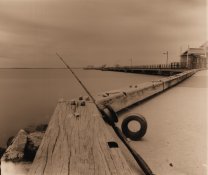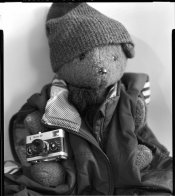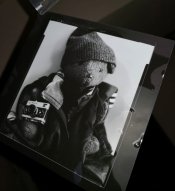I did a search, but what little info i could find was mostly about development.
I was curious about the prints.
Regards printing, what is the reason for using X-Ray Film.?
How does it differ from HP5 for example.?
That is to say.....if i took a picture of a park bench with a fountain next to it, how would the print from the X-Ray Film differ from the HP5.?
Thank You
I was curious about the prints.
Regards printing, what is the reason for using X-Ray Film.?
How does it differ from HP5 for example.?
That is to say.....if i took a picture of a park bench with a fountain next to it, how would the print from the X-Ray Film differ from the HP5.?
Thank You











 ) I've been incident metering for ISO 50 with the HR-T, but forum research shows claims ranging from 25 to 200 or even 400; e.g., all over the place, so experimenting is the rule. So ISO 50 translates to 1/50 @ f/16. One difference with x-ray vs commercial panchromatic film is with x-ray film there's none of those little charts in the box for sun, hazy sun, cloudy bright, etc. According to my vague notes, the 20 second @ f/300
) I've been incident metering for ISO 50 with the HR-T, but forum research shows claims ranging from 25 to 200 or even 400; e.g., all over the place, so experimenting is the rule. So ISO 50 translates to 1/50 @ f/16. One difference with x-ray vs commercial panchromatic film is with x-ray film there's none of those little charts in the box for sun, hazy sun, cloudy bright, etc. According to my vague notes, the 20 second @ f/300 








